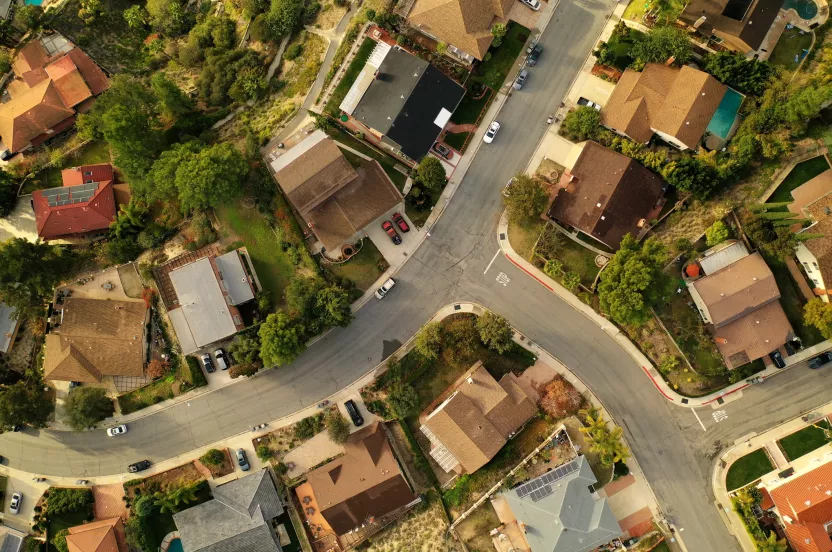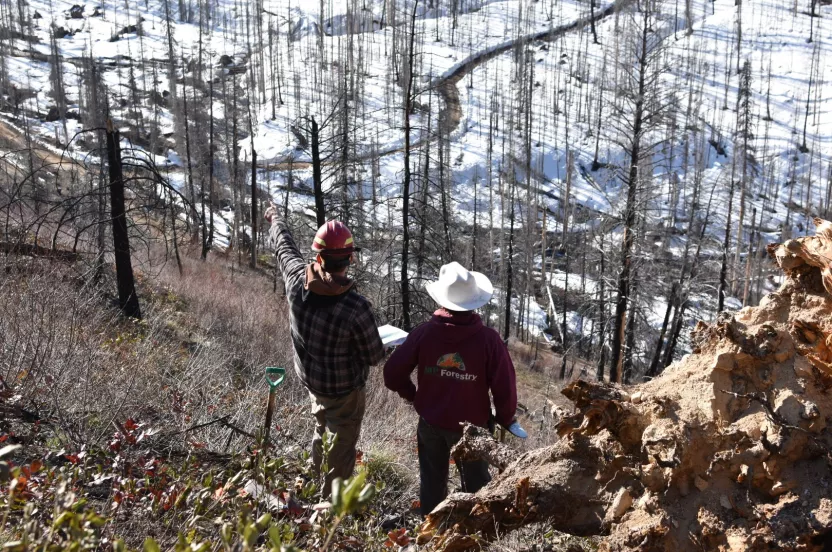Now live: The 2025 Canopy Report. Learn how Americans see trees. GET THE REPORT
Trees are an important part of everyday life in cities and towns all over the world. Just ask any urban forester, and they’ll provide you with a long list of all the benefits of community trees. But what happens to those trees when they need to be removed?
We have been working with Cambium Carbon to evaluate the potential for better management of urban wood waste in three US cities. I recently sat down with Marisa Repka, cofounder of Cambium Carbon, to discuss the topic.
How much wood is removed from urban areas and how much is currently recycled?
Marisa: The USDA Forest Service estimates that 46 million tons of merchantable wood fall in US cities each year. The vast majority is currently chipped, burned, or landfilled, but government officials often struggle to accurately measure downstream disposal at a local level. The US EPA estimates that 8.6% of the wood that ends up in municipal solid waste is recycled.
What are some products that can be made from urban wood — other than wood mulch?
Marisa: Most large cities are swimming in an excess of wood chips and mulch. There’s just more volume than could ever be put back in the landscape. At the same time, mulch rapidly decomposes, releasing the carbon stored in that tree back into the atmosphere. Urban wood can be used for a variety of high-value products, from dimensional lumber and premium furniture to bioenergy and biochar. The key is in matching logs and wood debris to a nearby processor who can turn that material into a value-added good, rather than chip it up and haul it off for disposal.
What is a Reforestation Hub?
Marisa: A Reforestation Hub is a model for life-cycle management of urban forests, in which fallen trees are treated not as a waste stream, but as a valuable material resource. Reforestation Hubs aim to capture the full value of urban trees, using the sale of secondary products to support regenerative tree planting and maintenance.
Which cities are currently engaged in creating a Reforestation Hub?
Marisa: As cities increasingly fight to combat the effects of climate change and provide equitable tree benefits — such as urban cooling and air pollution mitigation — to residents, we’ve seen a national push for solutions that rethink how we fund urban forest management. A growing number of cities are actively developing some form of urban wood utilization infrastructure. While the City of Baltimore has been a leader in this effort, there are cities from coast to coast of all sizes that have engaged in this movement. Cambium Carbon has worked with Eugene, Pittsburgh, New York City, and Philadelphia to develop local Reforestation Hub strategies; in addition, new state chapters and municipal members of the Urban Wood Network are also helping to organize and grow wood utilization infrastructure.
Also Read: Saving Natural Areas In Our Communities: 5 Cities Doing It Right
Who are the key players in a circular economy for urban wood?
Marisa: There are several key players including:
- Local Government – Cities can play a critical role in advancing a circular economy for urban wood. They can provide centralized infrastructure for the collection of material, allowing for large-scale reuse. Cities also have a unique opportunity to procure back the up-cycled material. For example, they could use the lumber for city buildings or biochar for roadside stormwater management.
- Arborists/Tree Care Companies – As the boots on the ground handling tree work and removals, these crews are often the arbiter of what happens to a tree after it falls. In addition to determining where the material goes, their decisions on how the tree comes down (i.e., whether in lengthy logs or short sections) will also direct if and how the material can be reused.
- Private Processors – These companies are the link between waste material and a value-added good. Whether commercial bioenergy producers or wood craftspeople, they not only have the equipment and staff needed to process raw material but also the sales and distribution channels to connect those finished products to a secondary market.
- Commercial Buyers – From architects and furniture manufacturers to farmers and energy producers, purchasers of urban wood products are needed to enable this circular economy model.
- Local Residents/Consumers – Individuals can lend their voice to support wood reuse and to purchase products that have been sourced and processed locally. By advocating for environmental impact, residents can help grow a movement and inspire change across all the other stakeholder groups.
How can cities make the case for investments in recycling and managing this resource?
Marisa: Starting any new program has its costs — whether it’s investment in physical infrastructure or time put into developing necessary partnerships, education campaigns, and implementation strategies. That said, by sizing the potential of the opportunity in terms of avoided disposal costs and/or economic value capture, the city can begin to understand the return on investment and payback period. At the same time, cities should see a reuse program as an actionable step toward larger resilience goals, whether that’s reducing waste, cutting back carbon emissions, or spurring local economic development.
What is one step a city forestry manager can take toward building a circular local economy for urban wood?
Marisa: Step one is to understand the scale of the opportunity. Start by collecting records of annual tree removals — size, species, and condition — and any projected activities (e.g., for pest management or other hazard mitigation). With this information in hand, a city forestry manager can assess the volume and characteristics of their wood waste stream and begin developing a tailored strategy for reuse.
The move to more responsible management of wood waste and building a circular wood economy is an important step for any city. If you’re interested in what this would look like in your community, get in touch with Cambium Carbon. This organization is always looking for opportunities to support cities in developing local Reforestation Hubs.




